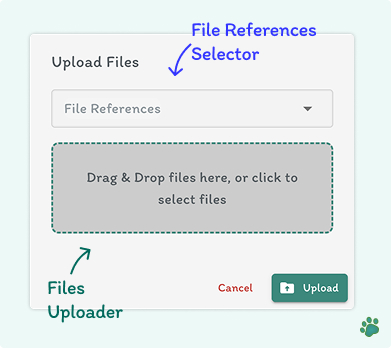Files
The Files data type in Snappit represents actual files that can be uploaded and used within workflows. This is particularly useful for steps that require file input, such as uploading images, documents, or other assets during browser automation.
📂 What is the Files Data Type?
Files in Snappit are used to represent one or more uploaded files that a step can use during execution. These files are stored securely within the project and can be referenced multiple times across different steps.
🔧 How to Use
Users can upload files directly in the workflow editor using the file input UI for any step that requires it:
- Click the Upload button within the step input.
- Select one or more files from your system.
- You can also reference files from previous steps if it matches accepted type of current files configuration
- Snappit stores the uploaded file(s) for use during execution.

📌 Key Features
- Supports single or multiple file uploads
- Files are uploaded and stored within your Snappit project
- Steps that support file input (like file uploaders) will expose this field
- Supports common file types like
.pdf,.jpg,.png,.csv, etc.
🧩 Use Cases
tip
Using the Files data type allows Snappit workflows to perform advanced actions that require external assets, making automations even more dynamic and powerful.
- Uploading profile pictures, resumes, or attachments
- Supplying datasets for automation
- Uploading configuration files, reports, or templates